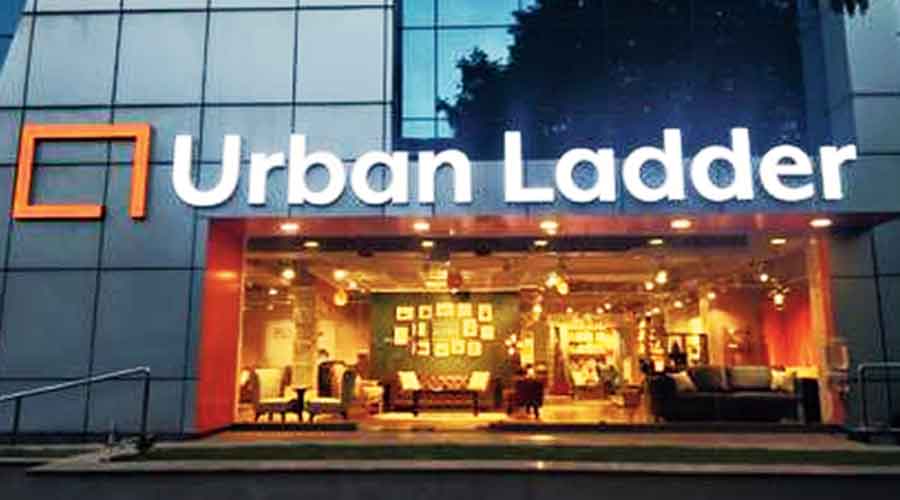Urban Ladder, founded in 2012 by Ashish Goel and Rajiv Srivatsa, is a premium online furniture and home décor brand based in India. The company has redefined the way consumers purchase furniture by offering a seamless digital shopping experience combined with high-quality, contemporary designs. Acquired by Reliance Retail in 2020, Urban Ladder has expanded its reach across India with a focus on omnichannel operations. This article explores Urban Ladder’s business model and delves into how it generates revenue.
Overview of Urban Ladder’s Business Model

Urban Ladder operates on a direct-to-consumer (D2C) model, complemented by an omnichannel strategy. Its business model revolves around:
- E-commerce Platform: Offering a wide range of furniture and home décor products through its website and mobile app.
- Offline Retail Stores: Expanding its physical presence to cater to customers who prefer an in-store experience.
- Customizable and Curated Products: Providing design-driven, functional, and customizable furniture for urban households.
- End-to-End Solutions: Offering services like interior design consultations, product assembly, and delivery to enhance the customer experience.
Urban Ladder’s model emphasizes quality, convenience, and modern aesthetics to target urban and semi-urban markets.
Revenue Streams
Urban Ladder earns money through multiple channels and product categories:
a) Furniture Sales
Furniture sales are the core revenue driver for Urban Ladder. The company offers a wide range of products, including:
- Living Room Furniture: Sofas, coffee tables, and recliners.
- Bedroom Furniture: Beds, wardrobes, and bedside tables.
- Dining Room Furniture: Dining tables, chairs, and cabinets.
- Study and Office Furniture: Work desks, bookshelves, and ergonomic chairs.
Revenue Source:
- Urban Ladder earns revenue by selling these products online and offline, often at premium prices due to the brand’s focus on quality and design.
b) Home Décor and Furnishings
In addition to furniture, Urban Ladder offers home décor products such as:
- Rugs, cushions, curtains, and wall art.
- Lighting fixtures like lamps and chandeliers.
- Accessories like mirrors, clocks, and planters.
Revenue Source:
- These add-on products increase average order value (AOV) and provide incremental revenue.
c) Customizable Furniture
Urban Ladder allows customers to customize furniture designs, dimensions, and finishes to meet their specific needs.
Revenue Source:
- Customizable furniture is priced higher than standard products, contributing to higher margins.
d) Interior Design Services
Urban Ladder provides interior design consultation services, which include:
- Personalized home layout planning.
- Assistance with furniture selection and placement.
Revenue Source:
- Revenue is generated through service fees for consultation and project execution, bundled with product sales.
e) Omnichannel Retail
While initially an online-only platform, Urban Ladder has opened physical retail stores in key cities to attract a broader audience. These stores:
- Allow customers to experience the look and feel of products before purchasing.
- Serve as fulfillment hubs for online orders in nearby areas.
Revenue Source:
- Offline retail sales complement online revenues and provide a complete shopping experience for customers.
f) Corporate and B2B Sales
Urban Ladder collaborates with businesses and real estate developers to furnish office spaces, showrooms, and sample apartments.
Revenue Source:
- Bulk orders and corporate deals generate significant revenue for the company.
g) Subscription and Warranty Services
Urban Ladder offers extended warranties and maintenance plans for furniture products, ensuring long-term customer satisfaction.
Revenue Source:
- Subscription fees for warranties and maintenance contribute to recurring revenue streams.
h) Seasonal Discounts and Sales
Urban Ladder frequently runs sales during festive seasons, which drive higher sales volumes.
Revenue Source:
- While discounts reduce margins temporarily, the increased volume compensates for the lower per-unit revenue.
Cost Structure
Urban Ladder’s cost structure includes several key components:
a) Product Manufacturing and Sourcing
The company collaborates with third-party manufacturers and suppliers to produce its furniture. Costs include:
- Raw materials like wood, metal, and fabric.
- Labor and production costs for crafting furniture.
b) Technology and Platform Maintenance
As a digital-first company, Urban Ladder invests heavily in:
- Maintaining its e-commerce platform and mobile app.
- Implementing features like augmented reality (AR) for virtual furniture placement.
c) Logistics and Delivery
Furniture delivery involves significant costs due to:
- Transportation and warehousing.
- Product assembly and installation services.
d) Marketing and Advertising
Urban Ladder allocates a large portion of its budget to:
- Digital marketing campaigns, including social media, Google Ads, and email promotions.
- Influencer collaborations and content marketing to enhance brand visibility.
e) Retail Operations
Operating physical stores entails costs related to:
- Rent, utilities, and staffing.
- Store setup and maintenance.
Unique Features Driving Revenue Growth
Urban Ladder employs several strategies to differentiate itself and drive growth:
a) Design-Centric Approach
Urban Ladder focuses on modern, functional, and aesthetically pleasing designs that appeal to urban consumers.
b) Seamless Omnichannel Experience
By integrating online and offline shopping, Urban Ladder provides a cohesive customer journey, allowing customers to browse online and purchase offline (or vice versa).
c) Value-Added Services
Services like free delivery, easy returns, and professional assembly enhance the overall customer experience and build loyalty.
d) Augmented Reality Tools
Urban Ladder uses AR technology to help customers visualize how furniture will look in their homes, reducing purchase hesitation.
e) Sustainability Initiatives
The brand emphasizes sustainable sourcing and eco-friendly practices, appealing to environmentally conscious consumers.
Challenges and Opportunities
Challenges
- Intense Competition: Competing with players like Pepperfry, Ikea, and Amazon Home poses significant challenges.
- High Operational Costs: Logistics and warehousing costs for bulky items like furniture remain substantial.
- Seasonality: Sales spikes during festive periods can lead to inconsistent revenue throughout the year.
Opportunities
- Tier 2 and Tier 3 Markets: Expanding into smaller cities presents significant growth potential as disposable incomes rise.
- Global Expansion: With Reliance Retail’s backing, Urban Ladder can explore international markets.
- Innovative Technologies: Leveraging AR, AI, and data analytics can further enhance customer engagement and personalization.
Financial Overview
Post its acquisition by Reliance Retail, Urban Ladder has been scaling its operations and expanding its offline presence. The company’s focus on profitability, streamlined supply chain, and customer experience has contributed to its steady growth in a highly competitive market.
Conclusion
Urban Ladder’s business model is a testament to the power of combining digital innovation with traditional retail practices. By focusing on quality, design, and customer-centric solutions, Urban Ladder has carved a niche for itself in the competitive furniture and home décor market. As it continues to expand its omnichannel footprint and leverage advanced technologies, Urban Ladder is well-positioned to sustain its growth and remain a leader in India’s evolving furniture retail industry.

